LT1084 Regulator: Pinout, Equivalent and Datasheet
Adjustable 2.54mm LT1084 PMIC 3 TO-220-3
The LT1084 is a positive adjustable Low Dropout Regulator designed to provide output current of 5A with higher efficiency than currently available devices. Furthermore, Huge range of Semiconductors, Capacitors, Resistors and IcS in stock. Welcome RFQ.
LT1084 Pinout

pinout
LT1084 CAD Model

symbol
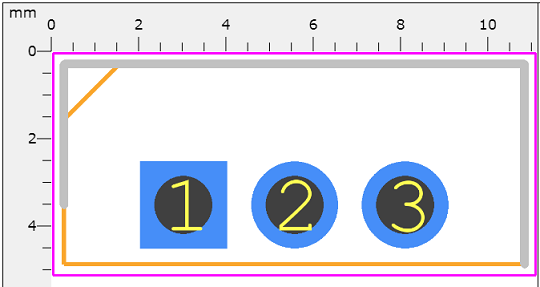
footprint
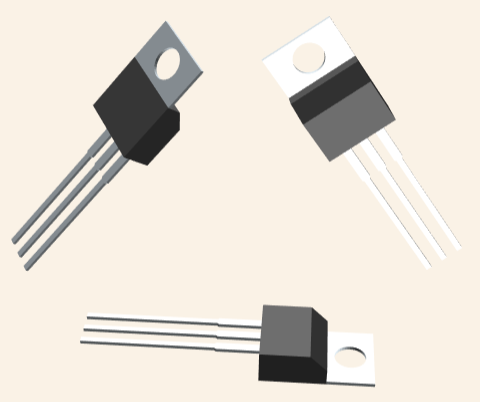
3D Model
LT1084 Overview
The LT1084 positive adjustable regulator is designed to provide 5A with higher efficiency than currently available devices. All internal circuitry is designed to operate down to 1V input-to-output differential and the dropout voltage is fully specified as a function of load current. Dropout is guaranteed at a maximum of 1.5V at maximum output current, decreasing at lower load currents. On-chip trimming adjusts the reference voltage to 1%. Current limit is also trimmed, minimizing the stress on both the regulator and power source circuitry under overload conditions. The LT1084 device is pin compatible with older 3-terminal regulators. A 10µF output capacitor is required on the new device. However, this is included in most regulator designs.
This article provides you with a basic overview of the LT1084, including its pin descriptions, features and specifications, etc., to help you quickly understand what LT1084 is.
LT1084 Features
● 3-Terminal Adjustable
● Output Current of 5A
● Operates Down to 1V Dropout
● Guaranteed Dropout Voltage at Multiple Current Levels
● Line Regulation: 0.015%
● Load Regulation: 0.1%
●100% Thermal Limit Functional Test
● Fixed Versions Available
● Available in 3-Lead Plastic TO-220 and DD Packages
Specifications
- TypeParameter
- Factory Lead Time8 Weeks
- Mounting Type
The "Mounting Type" in electronic components refers to the method used to attach or connect a component to a circuit board or other substrate, such as through-hole, surface-mount, or panel mount.
Through Hole - Package / Case
refers to the protective housing that encases an electronic component, providing mechanical support, electrical connections, and thermal management.
TO-220-3 - Surface Mount
having leads that are designed to be soldered on the side of a circuit board that the body of the component is mounted on.
NO - Operating Temperature
The operating temperature is the range of ambient temperature within which a power supply, or any other electrical equipment, operate in. This ranges from a minimum operating temperature, to a peak or maximum operating temperature, outside which, the power supply may fail.
0°C~125°C - Packaging
Semiconductor package is a carrier / shell used to contain and cover one or more semiconductor components or integrated circuits. The material of the shell can be metal, plastic, glass or ceramic.
Tube - Published2009
- JESD-609 Code
The "JESD-609 Code" in electronic components refers to a standardized marking code that indicates the lead-free solder composition and finish of electronic components for compliance with environmental regulations.
e3 - Part Status
Parts can have many statuses as they progress through the configuration, analysis, review, and approval stages.
Active - Moisture Sensitivity Level (MSL)
Moisture Sensitivity Level (MSL) is a standardized rating that indicates the susceptibility of electronic components, particularly semiconductors, to moisture-induced damage during storage and the soldering process, defining the allowable exposure time to ambient conditions before they require special handling or baking to prevent failures
1 (Unlimited) - Number of Terminations3
- ECCN Code
An ECCN (Export Control Classification Number) is an alphanumeric code used by the U.S. Bureau of Industry and Security to identify and categorize electronic components and other dual-use items that may require an export license based on their technical characteristics and potential for military use.
EAR99 - Terminal Finish
Terminal Finish refers to the surface treatment applied to the terminals or leads of electronic components to enhance their performance and longevity. It can improve solderability, corrosion resistance, and overall reliability of the connection in electronic assemblies. Common finishes include nickel, gold, and tin, each possessing distinct properties suitable for various applications. The choice of terminal finish can significantly impact the durability and effectiveness of electronic devices.
Matte Tin (Sn) - with Nickel (Ni) barrier - Terminal Position
In electronic components, the term "Terminal Position" refers to the physical location of the connection points on the component where external electrical connections can be made. These connection points, known as terminals, are typically used to attach wires, leads, or other components to the main body of the electronic component. The terminal position is important for ensuring proper connectivity and functionality of the component within a circuit. It is often specified in technical datasheets or component specifications to help designers and engineers understand how to properly integrate the component into their circuit designs.
SINGLE - Peak Reflow Temperature (Cel)
Peak Reflow Temperature (Cel) is a parameter that specifies the maximum temperature at which an electronic component can be exposed during the reflow soldering process. Reflow soldering is a common method used to attach electronic components to a circuit board. The Peak Reflow Temperature is crucial because it ensures that the component is not damaged or degraded during the soldering process. Exceeding the specified Peak Reflow Temperature can lead to issues such as component failure, reduced performance, or even permanent damage to the component. It is important for manufacturers and assemblers to adhere to the recommended Peak Reflow Temperature to ensure the reliability and functionality of the electronic components.
NOT SPECIFIED - Number of Functions1
- Terminal Pitch
The center distance from one pole to the next.
2.54mm - Time@Peak Reflow Temperature-Max (s)
Time@Peak Reflow Temperature-Max (s) refers to the maximum duration that an electronic component can be exposed to the peak reflow temperature during the soldering process, which is crucial for ensuring reliable solder joint formation without damaging the component.
NOT SPECIFIED - Base Part Number
The "Base Part Number" (BPN) in electronic components serves a similar purpose to the "Base Product Number." It refers to the primary identifier for a component that captures the essential characteristics shared by a group of similar components. The BPN provides a fundamental way to reference a family or series of components without specifying all the variations and specific details.
LT1084 - Pin Count
a count of all of the component leads (or pins)
3 - JESD-30 Code
JESD-30 Code refers to a standardized descriptive designation system established by JEDEC for semiconductor-device packages. This system provides a systematic method for generating designators that convey essential information about the package's physical characteristics, such as size and shape, which aids in component identification and selection. By using JESD-30 codes, manufacturers and engineers can ensure consistency and clarity in the specification of semiconductor packages across various applications and industries.
R-PSFM-T3 - Number of Outputs1
- Qualification Status
An indicator of formal certification of qualifications.
Not Qualified - Voltage - Input (Max)
Voltage - Input (Max) is a parameter in electronic components that specifies the maximum voltage that can be safely applied to the input of the component without causing damage. This parameter is crucial for ensuring the proper functioning and longevity of the component. Exceeding the maximum input voltage can lead to electrical overstress, which may result in permanent damage or failure of the component. It is important to carefully adhere to the specified maximum input voltage to prevent any potential issues and maintain the reliability of the electronic system.
30V - Output Type
The "Output Type" parameter in electronic components refers to the type of signal or data that is produced by the component as an output. This parameter specifies the nature of the output signal, such as analog or digital, and can also include details about the voltage levels, current levels, frequency, and other characteristics of the output signal. Understanding the output type of a component is crucial for ensuring compatibility with other components in a circuit or system, as well as for determining how the output signal can be utilized or processed further. In summary, the output type parameter provides essential information about the nature of the signal that is generated by the electronic component as its output.
Adjustable - Output Configuration
Output Configuration in electronic components refers to the arrangement or setup of the output pins or terminals of a device. It defines how the output signals are structured and how they interact with external circuits or devices. The output configuration can determine the functionality and compatibility of the component in a circuit design. Common types of output configurations include single-ended, differential, open-drain, and push-pull configurations, each serving different purposes and applications in electronic systems. Understanding the output configuration of a component is crucial for proper integration and operation within a circuit.
Positive - Voltage - Output (Min/Fixed)
Voltage - Output (Min/Fixed) refers to the minimum fixed output voltage level that an electronic component, such as a voltage regulator or power supply, is designed to provide under specified load conditions. This parameter ensures that the device consistently delivers a reliable voltage that meets the requirements of the connected circuits or components. It is critical for applications where stable and predictable voltage is necessary for proper operation.
1.25V - Number of Regulators
A regulator is a mechanism or device that controls something such as pressure, temperature, or fluid flow. The voltage regulator keeps the power level stabilized. A regulator is a mechanism or device that controls something such as pressure, temperature, or fluid flow.
1 - Protection Features
Protection features in electronic components refer to the built-in mechanisms or functionalities designed to safeguard the component and the overall system from various external factors or internal faults. These features are crucial for ensuring the reliability, longevity, and safety of the electronic device. Common protection features include overvoltage protection, overcurrent protection, reverse polarity protection, thermal protection, and short-circuit protection. By activating these features when necessary, the electronic component can prevent damage, malfunctions, or hazards that may arise from abnormal operating conditions or unforeseen events. Overall, protection features play a vital role in enhancing the robustness and resilience of electronic components in diverse applications.
Over Temperature - Voltage Dropout (Max)
Voltage Dropout (Max) refers to the minimum voltage difference between the input and output of a voltage regulator or linear power supply needed to maintain proper regulation. It indicates the maximum allowable voltage drop across the device for it to function effectively without dropout. If the input voltage falls below this threshold, the output voltage may drop below the specified level, leading to potential operational issues for connected components. This parameter is critical for ensuring stable and reliable power delivery in electronic circuits.
1.5V @ 5A - PSRR
PSRR stands for Power Supply Rejection Ratio. It is a measure of how well a device, such as an amplifier or a voltage regulator, can reject variations in the power supply voltage. A high PSRR value indicates that the device is able to maintain its performance even when the power supply voltage fluctuates. This parameter is important in ensuring stable and reliable operation of electronic components, especially in applications where the power supply voltage may not be perfectly regulated. A good PSRR helps to minimize noise and interference in the output signal of the device.
75dB (120Hz) - Dropout Voltage1-Nom
Dropout Voltage1-Nom is a parameter commonly found in voltage regulators and power management ICs. It refers to the minimum voltage difference required between the input voltage and the output voltage for the regulator to maintain regulation. In other words, it is the minimum voltage drop that the regulator can handle while still providing a stable output voltage. This parameter is important to consider when designing power supply circuits to ensure that the regulator can operate within its specified voltage range and maintain proper regulation under varying load conditions.
1.3V - Load Regulation-Max(%)
Load Regulation-Max(%) is a measure of how much the output voltage of a power supply or voltage regulator changes in response to variations in load current. It is expressed as a percentage of the nominal output voltage and indicates the maximum deviation from the set voltage when the load shifts from no load to full load. A lower value of load regulation signifies better performance, as it indicates that the output voltage remains stable under varying load conditions.
0.4% - Input-Output Voltage Differential-Max
Input-Output Voltage Differential-Max refers to the maximum allowable voltage difference between the input and output terminals of an electronic component, such as an operational amplifier or a voltage regulator. This parameter is crucial for ensuring the safe operation of the component, preventing damage, and maintaining performance. Exceeding this differential can lead to distortion, malfunction, or permanent failure of the device. It is essential for designers to consider this limit when integrating components into electronic circuits to achieve reliable functionality.
25V - RoHS Status
RoHS means “Restriction of Certain Hazardous Substances” in the “Hazardous Substances Directive” in electrical and electronic equipment.
ROHS3 Compliant
LT1084 Functional Block Diagram

block diagram
LT1084 Equivalent
| Model number | Manufacturer | Description |
| LT1084IT#TRPBF | Linear Technology | IC VREG 1.2 V-15 V ADJUSTABLE POSITIVE LDO REGULATOR, 1.5 V DROPOUT, PSFM3, LEAD FREE, PLASTIC, TO-220, 3 PIN, Adjustable Positive Single Output LDO Regulator |
| LT1084IT#TR | Linear Technology | IC VREG 1.2 V-15 V ADJUSTABLE POSITIVE LDO REGULATOR, 1.5 V DROPOUT, PSFM3, PLASTIC, TO-220, 3 PIN, Adjustable Positive Single Output LDO Regulator |
| CS-5205A-1T3 | On Semiconductor | 1.25 V-13V ADJUSTABLE POSITIVE LDO REGULATOR, 1.25V DROPOUT, PSFM3, STRAIGHT, TO-220, 3 PIN |
| CLM2850AU | Calogic Inc | Adjustable Positive LDO Regulator, 1.2V Min, 1.5V Dropout, PSFM3, PLASTIC, TO-220, 3 PIN |
| LT1084CP(ADJ) | Semtech Corporation | Adjustable Positive LDO Regulator, 1.2V Min, 1.5V Dropout, PSFM3, TO-247, 3 PIN |
| LT1084CT | Analog Devices Inc | Adjustable Positive LDO Regulator, 1.2V Min, 15V Max, 1.5V Dropout, BIPolar, PSFM3 |
| LT1084IT | Analog Devices Inc | Adjustable Positive LDO Regulator, 1.2V Min, 15V Max, 1.5V Dropout, BIPolar, PSFM3 |
| CS5205A-1GT3 | Cherry Semiconductor Corporation | Adjustable Positive LDO Regulator, 1.25V Min, 13V Max, 1.25V Dropout, BIPolar, PSFM3, STRAIGHT, TO-220, 3 PIN |
| LT1084IT#PBF | Analog Devices Inc | 7.5A, 5A, 3A Low Dropout Positive Adjustable Regulators |
Parts with Similar Specs
LT1084 Application
● High Efficiency Linear Regulators
● Post Regulators for Switching Supplies
● Constant Current Regulators
● Battery Chargers
LT1084 Package

package
LT1084 Manufacturer
As a member of the S&P 500, Linear Technology Corporation is committed to designing, manufacturing and marketing a extensive line of high performance analog integrated circuits for main companies around the world. Between the analog world and digital electronic products in communications, networks, industry, automobiles, computers, medical, instrumentation, consumer, military and aerospace systems, our products have built an important bridge for them. Our products include not only the production of power management, data conversion, signal conditioning, RF and interface ICs, μModule subsystems, but also wireless sensor network products.
Datasheet PDF
- Datasheets :
Trend Analysis
What is the essential property of the LT1084?
The LT1084 is a positive adjustable Low Dropout Regulator designed to provide output current of 5A with higher efficiency than currently available devices.
Is the LT1084 device compatible with the old 3-terminal regulator pins?
The LT1084 device is pin compatible with older 3-terminal regulator.
Does the LT1084 series 3-terminal adjustable regulators provide the protection expected in high-performance voltage regulators?
The LT1084 family of 3-terminal adjustable regulators is easy to use and has all the protection features that are expected in high performance voltage regulators. They are short-circuit protected, and have safe area protection as well as thermal shutdown to turn off the regulator should the junction temperature exceed about 165°C.
 STM32F103C6T6 Microcontroller: 72MHz, 48-LQFP, Pinout and Datasheet
STM32F103C6T6 Microcontroller: 72MHz, 48-LQFP, Pinout and Datasheet18 February 20226797
 A Comprehensive Guide to LTC7810ILXE#PBF Dual Switching Controller
A Comprehensive Guide to LTC7810ILXE#PBF Dual Switching Controller06 March 2024153
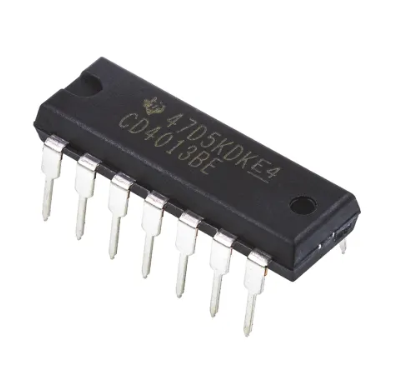 CD4013BE: Overview, Features, Applications
CD4013BE: Overview, Features, Applications02 November 20231783
 An Introduction for Motor Driver IC ULN2003
An Introduction for Motor Driver IC ULN200325 April 202227831
![A4988 VS DRV8825[Video]: What are the differences between them?](https://res.utmel.com/Images/Article/f171b290-e30c-4c91-bb39-5bea7b78c028.png) A4988 VS DRV8825[Video]: What are the differences between them?
A4988 VS DRV8825[Video]: What are the differences between them?27 April 202224021
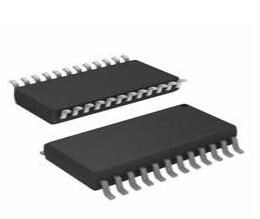 L6235 BLDC Motor Controller: Datasheet, Pinout, Specifications
L6235 BLDC Motor Controller: Datasheet, Pinout, Specifications20 October 20212805
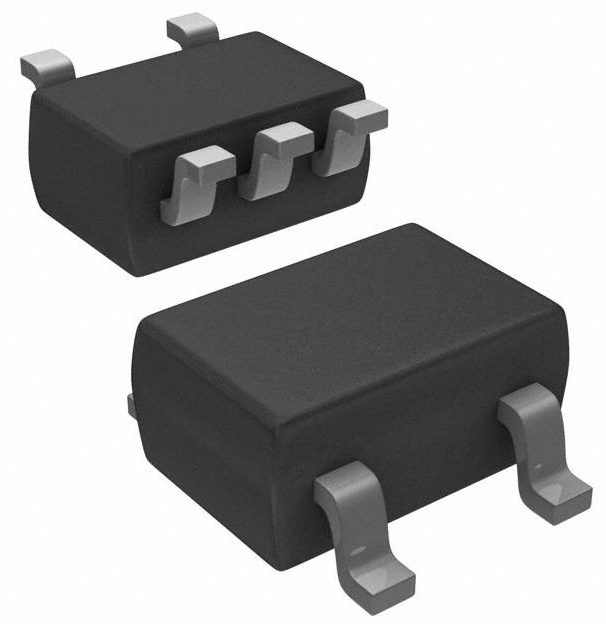 SN74LVC1G14DCKR: Overview, Features, and Applications
SN74LVC1G14DCKR: Overview, Features, and Applications13 December 2023446
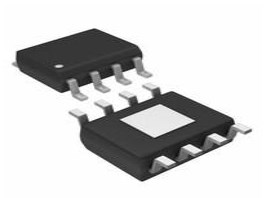 L5973D:35V, 250kHz, Pinout and Datasheet
L5973D:35V, 250kHz, Pinout and Datasheet07 March 20221329
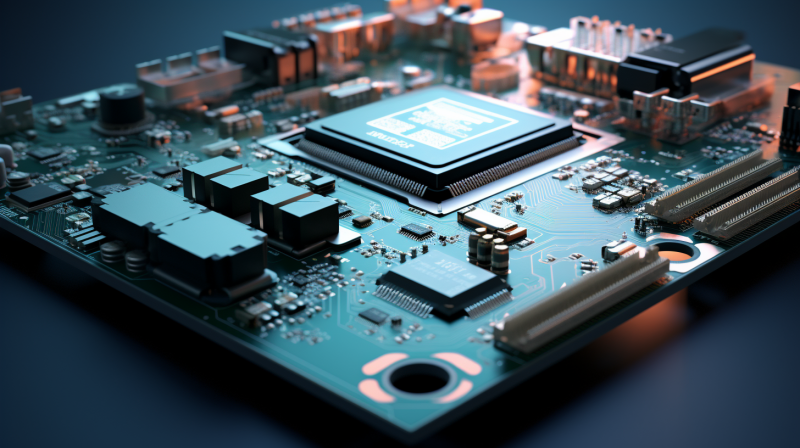 China to Inject $40 Billion into Semiconductor Sector with New State Fund
China to Inject $40 Billion into Semiconductor Sector with New State Fund07 September 20232642
 Inductance Basis: Definition, Structure and Applications
Inductance Basis: Definition, Structure and Applications18 April 20227041
 An Overview of Bipolar Transistors
An Overview of Bipolar Transistors27 August 20206267
 What are Proximity Sensors?
What are Proximity Sensors?24 October 20257002
 DeepMind Building AI That Thinks Like a Baby May Help Build Computer Models With Human Minds
DeepMind Building AI That Thinks Like a Baby May Help Build Computer Models With Human Minds18 July 20221107
 What is a Motor Starter?
What is a Motor Starter?06 March 20213933
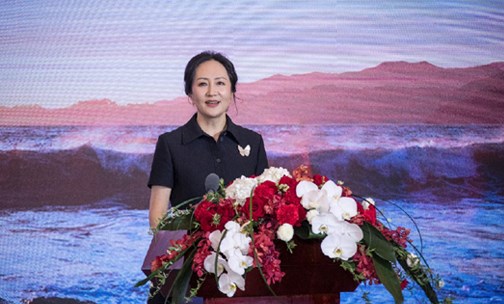 Huawei Responded How to Solve the Problem of Chip Supply
Huawei Responded How to Solve the Problem of Chip Supply29 March 20222633
 What is speaker?
What is speaker?08 October 20216220
Linear Technology/Analog Devices
In Stock: 128
United States
China
Canada
Japan
Russia
Germany
United Kingdom
Singapore
Italy
Hong Kong(China)
Taiwan(China)
France
Korea
Mexico
Netherlands
Malaysia
Austria
Spain
Switzerland
Poland
Thailand
Vietnam
India
United Arab Emirates
Afghanistan
Åland Islands
Albania
Algeria
American Samoa
Andorra
Angola
Anguilla
Antigua & Barbuda
Argentina
Armenia
Aruba
Australia
Azerbaijan
Bahamas
Bahrain
Bangladesh
Barbados
Belarus
Belgium
Belize
Benin
Bermuda
Bhutan
Bolivia
Bonaire, Sint Eustatius and Saba
Bosnia & Herzegovina
Botswana
Brazil
British Indian Ocean Territory
British Virgin Islands
Brunei
Bulgaria
Burkina Faso
Burundi
Cabo Verde
Cambodia
Cameroon
Cayman Islands
Central African Republic
Chad
Chile
Christmas Island
Cocos (Keeling) Islands
Colombia
Comoros
Congo
Congo (DRC)
Cook Islands
Costa Rica
Côte d’Ivoire
Croatia
Cuba
Curaçao
Cyprus
Czechia
Denmark
Djibouti
Dominica
Dominican Republic
Ecuador
Egypt
El Salvador
Equatorial Guinea
Eritrea
Estonia
Eswatini
Ethiopia
Falkland Islands
Faroe Islands
Fiji
Finland
French Guiana
French Polynesia
Gabon
Gambia
Georgia
Ghana
Gibraltar
Greece
Greenland
Grenada
Guadeloupe
Guam
Guatemala
Guernsey
Guinea
Guinea-Bissau
Guyana
Haiti
Honduras
Hungary
Iceland
Indonesia
Iran
Iraq
Ireland
Isle of Man
Israel
Jamaica
Jersey
Jordan
Kazakhstan
Kenya
Kiribati
Kosovo
Kuwait
Kyrgyzstan
Laos
Latvia
Lebanon
Lesotho
Liberia
Libya
Liechtenstein
Lithuania
Luxembourg
Macao(China)
Madagascar
Malawi
Maldives
Mali
Malta
Marshall Islands
Martinique
Mauritania
Mauritius
Mayotte
Micronesia
Moldova
Monaco
Mongolia
Montenegro
Montserrat
Morocco
Mozambique
Myanmar
Namibia
Nauru
Nepal
New Caledonia
New Zealand
Nicaragua
Niger
Nigeria
Niue
Norfolk Island
North Korea
North Macedonia
Northern Mariana Islands
Norway
Oman
Pakistan
Palau
Palestinian Authority
Panama
Papua New Guinea
Paraguay
Peru
Philippines
Pitcairn Islands
Portugal
Puerto Rico
Qatar
Réunion
Romania
Rwanda
Samoa
San Marino
São Tomé & Príncipe
Saudi Arabia
Senegal
Serbia
Seychelles
Sierra Leone
Sint Maarten
Slovakia
Slovenia
Solomon Islands
Somalia
South Africa
South Sudan
Sri Lanka
St Helena, Ascension, Tristan da Cunha
St. Barthélemy
St. Kitts & Nevis
St. Lucia
St. Martin
St. Pierre & Miquelon
St. Vincent & Grenadines
Sudan
Suriname
Svalbard & Jan Mayen
Sweden
Syria
Tajikistan
Tanzania
Timor-Leste
Togo
Tokelau
Tonga
Trinidad & Tobago
Tunisia
Turkey
Turkmenistan
Turks & Caicos Islands
Tuvalu
U.S. Outlying Islands
U.S. Virgin Islands
Uganda
Ukraine
Uruguay
Uzbekistan
Vanuatu
Vatican City
Venezuela
Wallis & Futuna
Yemen
Zambia
Zimbabwe

















